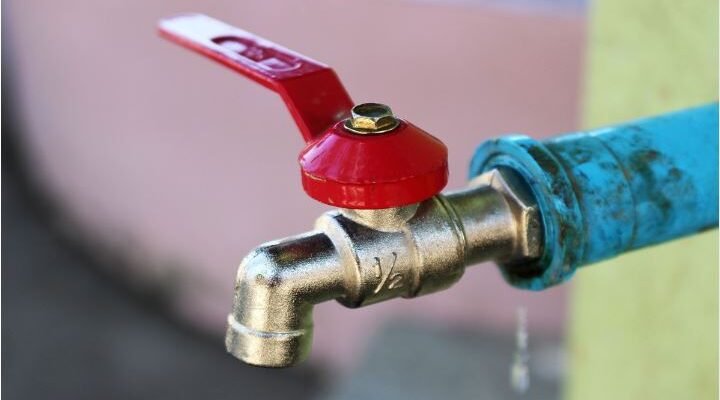Emergencies are just that – they never alert you when they come. The only thing you can do is prepare for them and equip yourself to mitigate the damage they can cause. For plumbing emergencies, having some tools at hand is essential. They will help you address various situations that could arise during a plumbing emergency.
Keeping vital assets at home and learning DIY skills will save you some cash you could spend on hiring a plumber. But that is not all. Some emergencies arise at night, during the holidays, or on the weekends. At that time, you cannot call professionals to help. Other emergencies require immediate attention, and you cannot achieve that without handy tools.
These seven vital tools will save your day when you experience plumbing issues at home.
1. A Plunger
You do not need a plumber to come and open your drain when some objects block it. A plunger will help you remove the obstacles and get your drain running again. This tool works for the toilet, sink, bathtubs, and hand washing basins. Ensure you keep one for each to prevent cross-contamination.
Using a plunger is relatively easy. Fill the blocked sink or tub with some water, place the tool over the drain and press down firmly to create an airtight seal. Once you have done this, you can start pumping up and down vigorously for about 30 seconds before lifting it off. It will dislodge blockages in your pipes and allow water to flow freely again.
If your plumbing issue persists, then repeat as necessary until it resolves. Contact a Plumber Newcastle when every effort fails. They will help diagnose and fix the problem. Ensure you clean your plunger after use, as any dirt or debris left behind could lead to further clogging issues. Using petroleum jelly around the cup edges also helps to create a better seal when plunging.
2. Pipe Wrench
https://pixabay.com/photos/plumbing-pipe-wrench-repair-585658/
Your faucets or pipes may leak in the most unexpected way, and a pipe wrench is your go-to tool. This plumbing wonder can loosen and tighten pipes of all types and sizes. They are adjustable, making them grip and turn with ease. The jaw-like shape of the tool helps you apply some pressure to free stuck pipes or stop leaks through bolts and nuts.
For DIYers, you only want to work with basic pipe wrenches. The main types of pipe wrench you will need include single-adjustable, double-end adjustable, and chain wrenches. Each applies leverage to turn a pipe, but the double-end is more versatile and can grip the entire circumference.
3. Pipe Cutter
https://pixabay.com/photos/cutter-cutting-fittings-pipe-87704/
Do you want to extend or reduce the length of a pipe? Hacksaws are what their name says – hacks. But a pipe cutter is your saving grace. It is a specialized tool designed to cut metal and plastic pipes. Use it whenever you need to cut pipes of different sizes and materials.
These tools save the day when installing faucets, valves, and new drains. Also, they save you time and energy while ensuring accuracy every time. Remember to keep a few in your toolbox for large and small pipes. You can even purchase an all-in-one tool for any size job you may have.
4. Aluminum Tape
Leaking pipes are common plumbing problems. At first, you may assume that the drip is insignificant until it becomes a gush. Use aluminum tape to stop the leak temporarily until you can get it fixed by a qualified plumber or do repairs yourself.
Using aluminum tape is a quick and easy way to seal leaks in pipes and fixtures. To ensure a tight, watertight seal, start by cleaning the area where you will place the tape. Then wrap it around the pipe at least three times before pressing to ensure it is secure.
5. Plumber’s Snake
This tool helps when your plunger fails to release blocked drains. Drain auger and plumbing snake are other names you will come across. It helps to unclog pipes and drains by reaching into the pipe. After getting to the obstruction, you can pull out anything stuck in your drainage system.
A plumber’s snake works by extending a long flexible metal cable into the pipe and then winding it around until it reaches the blockage. The end has a cutting head or hook that can break up or grab onto objects stuck in the drain. After dislodging, you can pull out whatever was causing the blockage, allowing water to flow freely again. Also, you can use it to clear tree roots and organic matter that may have grown inside your pipes.
6. Tongue and Groove Pliers
Sometimes, your problem may only require tightening some nuts or bolts to stop the leak. Tongue and groove pliers are your best option for such cases. These ones have adjustable pivots and curved jaws to fit bolts of any size.
Tongue and groove pliers are versatile tools with a range of applications. Before buying these, check to ensure they are strong enough for your plumbing project. They come in different sizes and degrees of strength with extra features. You do not want to invest in something that cannot withhold the pressure you plan to exert.
7. Metal File
https://pixabay.com/photos/file-tools-kit-crafts-metal-4166185/
After cutting your metal pipes, you may need to do some filing on the edges. It will help to smooth it out to ensure a secure and leak-proof joint. Use a metal file for that rather than an ordinary woodworking file. Metal files have sharp edges designed to cut through metal precisely.
Use the correct file for your pipes; different metals require different files. Check the manufacturer’s advice before purchasing. Determine the type of metal (aluminum, iron, brass) and the correct filet. When filing your pipes, always start with a coarse-cut file and switch to a fine-cut one for better results. Finally, use sandpaper to make the edges smooth like butter.
Summing Up
Your plumbing needs sometimes change abruptly. Before diving into a project, be sure you have the required tools. This article has outlined seven essential plumbing tools that every plumber needs in their toolbox. Homeowners will also need them to address various emergency situations. Ensure you keep them within easy reach and use them correctly to avoid accidents.




